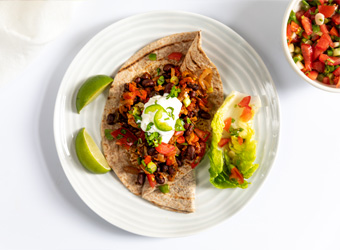
- Onions, garlic and leeks contain fermentable carbohydrates called fructans which should be avoided. Instead use the green, leafy parts of spring onions, leeks and chives to flavour the recipes you cook with.
- Make garlic oil by gently frying a sliced garlic clove in oil and discarding the garlic clove. The flavoured oil can be drizzled on a dish before serving.
- Soak a tablespoon of oats, or oat bran, in three times the volume of water to make porridge or muesli. It makes a standard portion really swell up and go further.
- Plain lactose free yogurt is fine to eat for people with a sensitive gut but it can be hard to find in the supermarket. Lactose free milk is more widely available. Make your own low lactose yogurt by warming 500ml of lactose free milk, adding a tablespoon of plain live yoghurt and leaving in a warm place overnight.
- Learn how to make your own sourdough and gluten free breads. These can be then be sliced and frozen for when you need them.
- For a creamier taste soak sunflower seeds and walnuts overnight to use in porridge, bread and vegetable pâtés. They add texture and nutrients to the dishes you make.
- Buy a set of digital scales and train yourself to weigh the food you eat. This helps to control the portion size of food that may upset you.
- Keep a diary of the food you eat and the portion size you can tolerate. Sometimes it is the amount of a food rather than the food itself that upsets your sensitive gut.
- Try using plant milks such as oat, soya and rice milk in your cooking. They are lactose free and can be more easily tolerated by a sensitive gut.
- Eat as wide a variety of natural, unprocessed food as possible to ensure you obtain all the nutrients you need from your diet.





